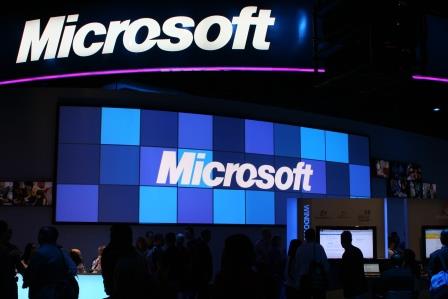It will certainly go down as one of the strongest business alliances in the history of technology - and one of the most profitable as well...
At their peak, these two companies dominated the personal-computing market, accounting for roughly 95% of sales.
As a result of their unique fit, both companies made thousands of shareholders rich.
No doubt, in recent years both these firms failed to keep up with rapid changes in the global tech landscape. And their shareholders paid the price as both stocks lagged the tech sector and the overall market.
It's been more than a decade since these firms' heyday, but now both stocks have beaten the odds - and are back at trouncing the Standard & Poor's 500.
This lands both companies squarely on our best tech stocks to buy list - here's why...
Wintel's Rise... and Fall
 You'd be hard-pressed to find a stock that beat Microsoft Corp. (Nasdaq: MSFT) during its halcyon days. From its initial public offering in March 1986 to its peak in January 2000, Microsoft stock rose an astounding 25,000%.
You'd be hard-pressed to find a stock that beat Microsoft Corp. (Nasdaq: MSFT) during its halcyon days. From its initial public offering in March 1986 to its peak in January 2000, Microsoft stock rose an astounding 25,000%.
That wealth machine would have converted $10,000 into $2.5 million in just under 15 years.
The Redmond, Wash.-based firm was so successful because it made the operating system used by virtually every PC manufacturer, besides Apple Inc. (Nasdaq: AAPL).
And, in turn, 90% of those PCs relied on semiconductors made by Intel Corp. (Nasdaq: INTC).
The technology media dubbed this unbeatable team "Wintel" to describe PCs' standard configuration - the Microsoft Windows OS and Intel chips.
The matchup was great for Intel shareholders, too. During Microsoft's great run, Intel shares rose 5,550%. Both stocks simply crushed the S&P 500, which produced gains of 565% during the period.
On the one hand, Wintel's outstanding performance is just one of many examples of how "the road to wealth is paved by tech."
On the other hand, the Wintel saga shows what can happen to market leaders who fail to keep up with big shifts in technology.
The slowing growth rate in the PC market that followed the "dot-bomb" implosion of 2000 ended the years of eye-popping increases for Wintel. The decade that followed taught Microsoft and Intel investors a very hard lesson: The market doesn't reward companies that rake in profits but show only modest rates of growth.
And in more recent years, neither Microsoft nor Intel have made solid entries into either cloud computing or the mobile revolution.
Over the past five years, the tech-centric Nasdaq Composite Index has gained 126%, compared with 83% for Microsoft and 76% for Intel.
Clearly, a shake-up at the top was in order to reverse course for both companies...
These Tech Stocks to Buy Will Soar with New Leaders and New Visions
Not surprisingly, both firms have replaced their chief executives over the past year. Microsoft and Intel are now moving aggressively to improve their operations by stepping up mobile and cloud sales. And both are benefitting from new stability in the PC market.
Tech business research firm Gartner notes that PC sales actually rose in the second quarter. Yes, 0.1% is just a tad above breakeven, but global PC sales had fallen for eight straight quarters.
With that in mind, let's take a closer look at the track record of each new CEO as Wintel goes "back to the future."
Satya Nadella has put his seven months as Microsoft's CEO to good use.
In early August, the veteran Microsoft executive lured Peggy Johnson away from Qualcomm Inc. (Nasdaq: QCOM) to become head of business development.
This is significant because Qualcomm is a pioneer in the wireless industry. So, Nadella's first senior hire shows that he is serious about making Microsoft a strong player in the mobile sector.
Johnson's arrival occurred just three weeks after Nadella announced he was slashing Microsoft's workforce by 18,000 over the next year. That 14% reduction is the largest in the company's history.
Most of the cuts came out of the sprawling Nokia phone unit, the focus of a $9.6 billion buyout Nadella's CEO predecessor, Steve Ballmer, had initiated.
The Nokia layoffs show that Nadella has no illusions about the challenges he faces in igniting mobile sales. Windows Mobile will be taking on the iconic iPhone from Apple and the Android OS from Google Inc. (Nasdaq: GOOG, GOOGL).
No doubt, the Windows Mobile OS ranks a distant third, with global market share of just 2.5% in the second quarter. In contrast, iOS and Android had a combined market share of 96.4%.
But being so far back can end up being a good thing. Market research firm IDC notes that lower-end devices, those costing less than $200, accounted for 58.6% of all Android devices sold in the second quarter. If Nadella can simply double Microsoft's mobile market share and do so with higher margins, that alone would represent major progress.
And of course, Nadella wants to transition away from Microsoft's reliance on software sales as the market moves toward cloud computing, where clients pay vendors to host data and applications and then deliver them via the web.
In early July, Microsoft bought InMage, a startup that provides both cloud connectivity and data recovery for businesses. Microsoft didn't announce the purchase price, but the move shows that Nadella is determined to target the cloud market for higher sales.
And two weeks later, Microsoft said that in its fiscal fourth quarter, commercial cloud revenue grew 147% from the year-ago period, with an annualized run rate exceeding $4.4 billion.
Let's not forget that Microsoft is already a financial winner. In the most recent quarter, earnings per share were off slightly, but operating income rose 6.7% to nearly $6.5 billion.
Microsoft has operating margins of 32% and a return on equity (ROE) of 26%. So far this year, the stock is up 21%, a little more than double the S&P 500's 9% return.
Intel Everywhere
For his part, Brian Krzanich also came on like gangbusters right after he took the top spot at Intel in May 2013.
After logging 30 years at the world's largest semiconductor firm, the 52-year-old quickly broke ranks with his predecessors. After all, they, too, had missed the mobile revolution by focusing on the exact opposite of what works for smartphones - simple, low-power chips.
His first big move spoke volumes. Less than two weeks into the job, Krzanich made a $90 million mobile merger. Intel bought the division of ST-Ericsson that makes microchips for wireless GPS communication.
He followed that up by forging a crucial alliance with Apple's archrival, Samsung Electronics Co. Ltd. (KRX: 005930). Armed with the Android operating system, Samsung is a global leader in smartphone sales. It not only makes the highest-selling smartphone in the United States but also is coming on strong in tablets.
Krzanich arranged to have Intel supply its Atom line of processor chips for Samsung's new Galaxy Tab 3. This is a big win. Right now, mobile accounts for only 1% of Intel's sales. But the Galaxy alone could boost that several times over.
At the same time, Krzanich targeted a new line of processors used for wireless data centers. The idea is to make an end-to-end play - from the mobile device itself to the equipment that supports all those mobile operations.
Besides mobile, Intel is also going big into wearable tech.
Last January, Krzanich wowed the crowd at the International Consumer Electronics Show in Las Vegas by highlighting Intel's entry into wearables, a market with 75% annual growth rates.
He showed off a pair of smart earbuds that can both track a user's heart rate and work with fitness apps on a smartphone. Krzanich also demonstrated Jarvis, a smart headset similar to digital assistants like Apple's Siri and Google Now.
Evidence that Intel is improving came in mid-July when the Silicon Valley legend revealed it had shipped a record number of chips in the second quarter.
Moreover, Intel posted a 40% jump in profit from the year-ago period as it sold 10 million tablet semiconductors, one-fourth of Krzanich's goal of 40 million a year.
For investors there was even more good news. Intel announced plans to add $20 billion to its stock buyback plan - $4 billion of which is expected to occur in the current quarter.
That, to me, shows solid management confidence.
Besides higher profits, Intel also has strong overall financials, with operating margins of nearly 26% and an 18% ROE. And so far this year, Intel stock is up 34%, just short of triple the S&P 500's gains.
Thus, for the first time in a decade, "Wintel" is beating the broader market - making it a great time to get in on these tech stocks to buy.
More from Michael Robinson: So far this year, the tech-centric Nasdaq is up 9.5%, beating the Dow by nearly 180% over the same period. But out of the dizzying array of tech stock choices, this is your best bet for generating wealth over the long term. It's the one tech investment to buy now and never sell...
About the Author
Michael A. Robinson is a 36-year Silicon Valley veteran and one of the top tech and biotech financial analysts working today. That's because, as a consultant, senior adviser, and board member for Silicon Valley venture capital firms, Michael enjoys privileged access to pioneering CEOs, scientists, and high-profile players. And he brings this entire world of Silicon Valley "insiders" right to you...
- He was one of five people involved in early meetings for the $160 billion "cloud" computing phenomenon.
- He was there as Lee Iacocca and Roger Smith, the CEOs of Chrysler and GM, led the robotics revolution that saved the U.S. automotive industry.
- As cyber-security was becoming a focus of national security, Michael was with Dave DeWalt, the CEO of McAfee, right before Intel acquired his company for $7.8 billion.
This all means the entire world is constantly seeking Michael's insight.
In addition to being a regular guest and panelist on CNBC and Fox Business, he is also a Pulitzer Prize-nominated writer and reporter. His first book Overdrawn: The Bailout of American Savings warned people about the coming financial collapse - years before the word "bailout" became a household word.
Silicon Valley defense publications vie for his analysis. He's worked for Defense Media Network and Signal Magazine, as well as The New York Times, American Enterprise, and The Wall Street Journal.
And even with decades of experience, Michael believes there has never been a moment in time quite like this.
Right now, medical breakthroughs that once took years to develop are moving at a record speed. And that means we are going to see highly lucrative biotech investment opportunities come in fast and furious.
To help you navigate the historic opportunity in biotech, Michael launched the Bio-Tech Profit Alliance.
His other publications include: Strategic Tech Investor, The Nova-X Report, Bio-Technology Profit Alliance and Nexus-9 Network.



